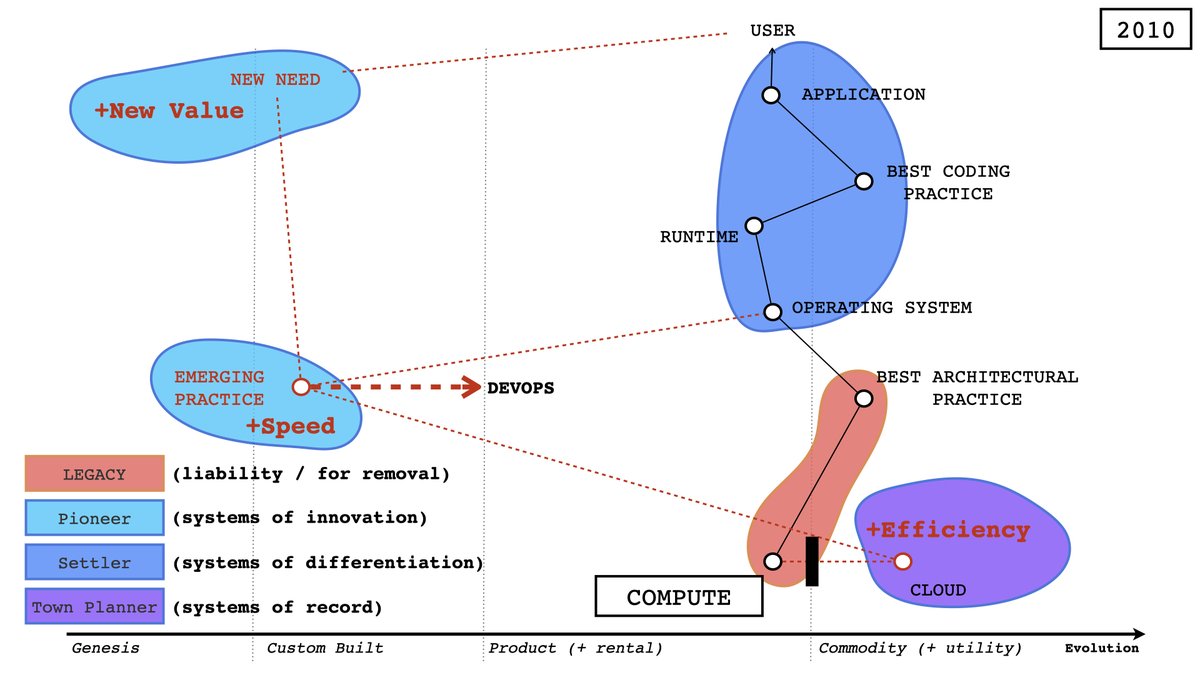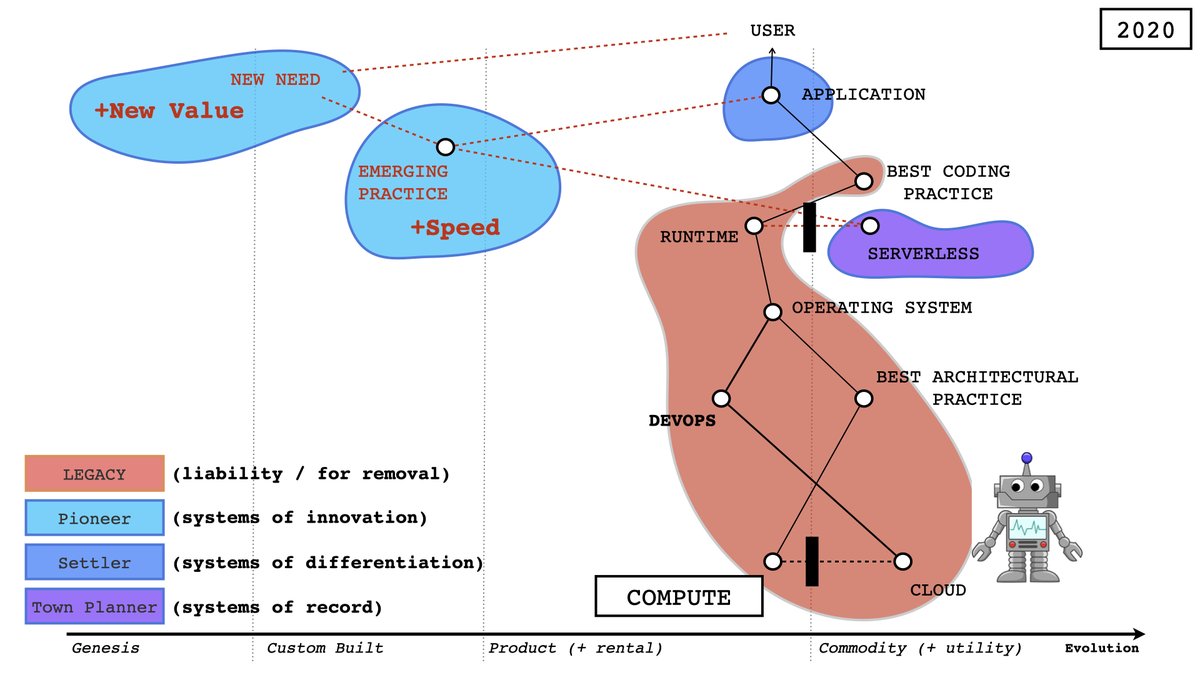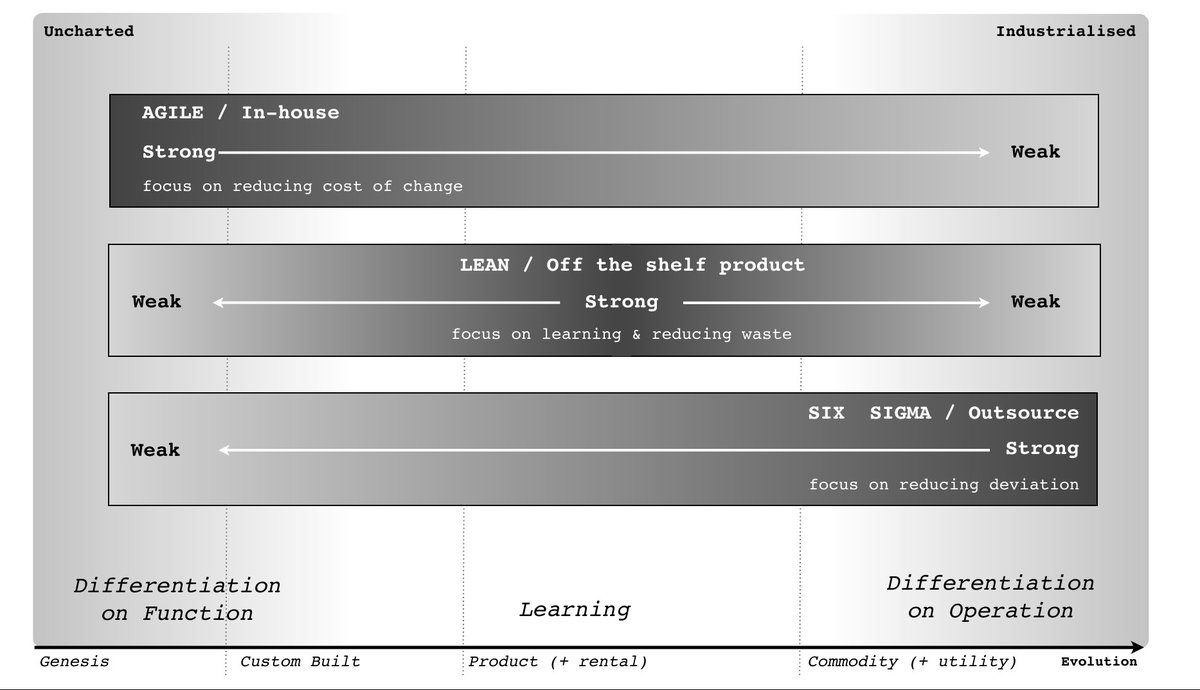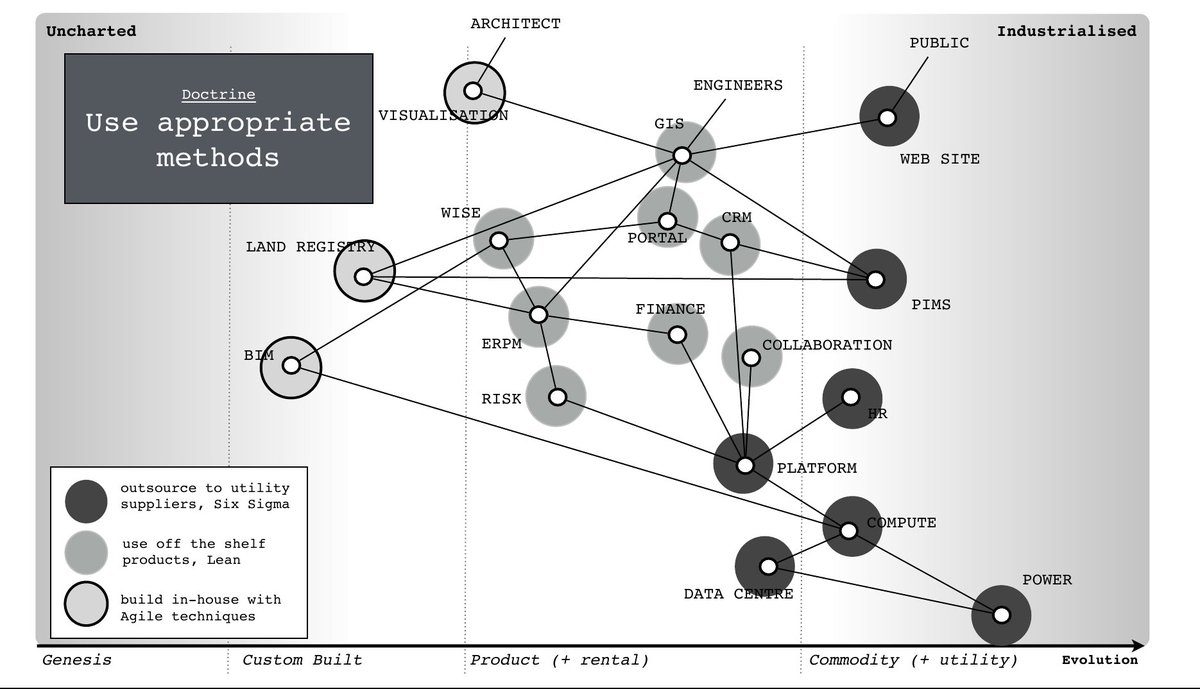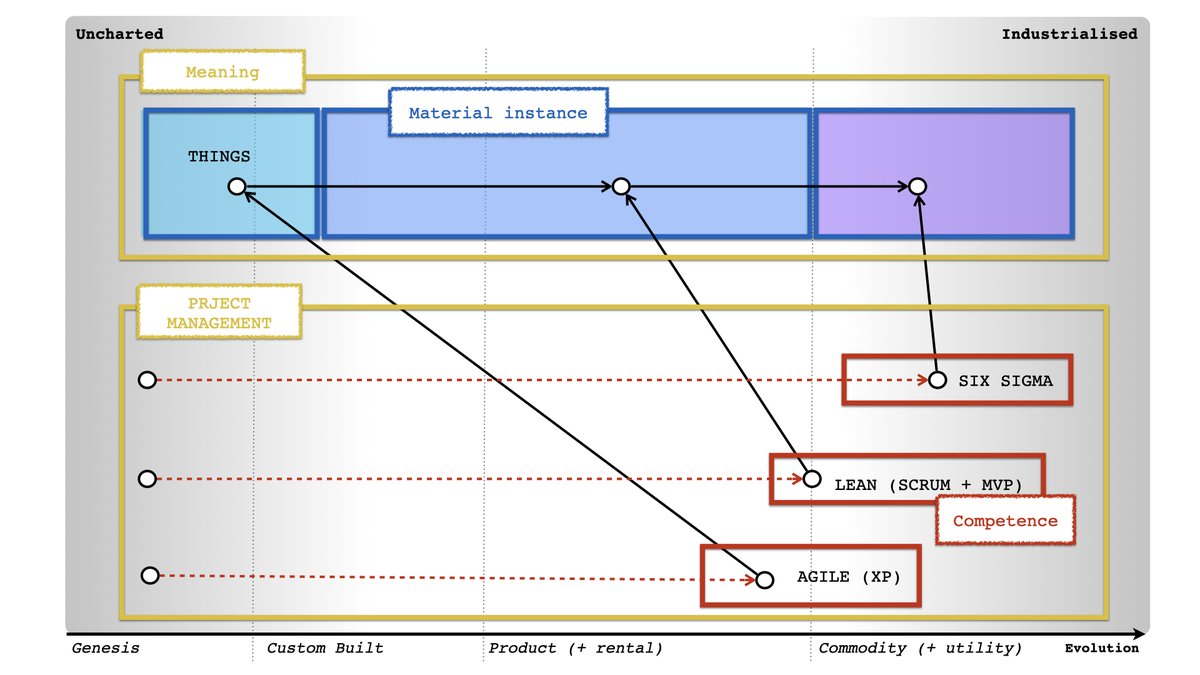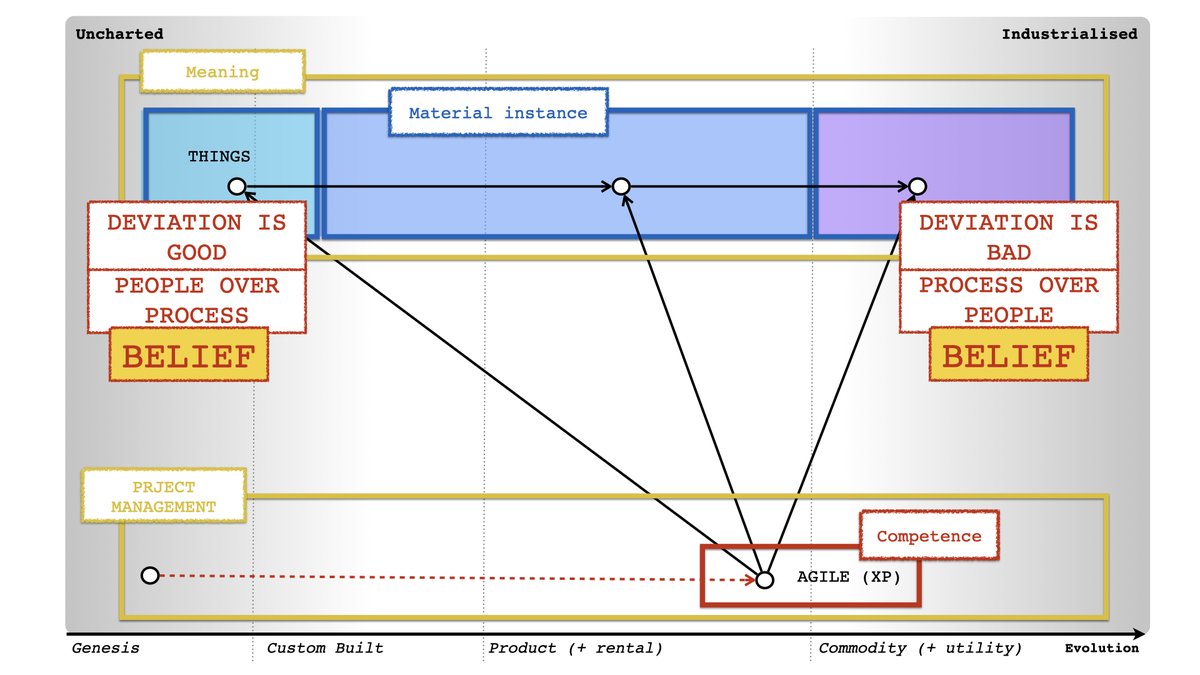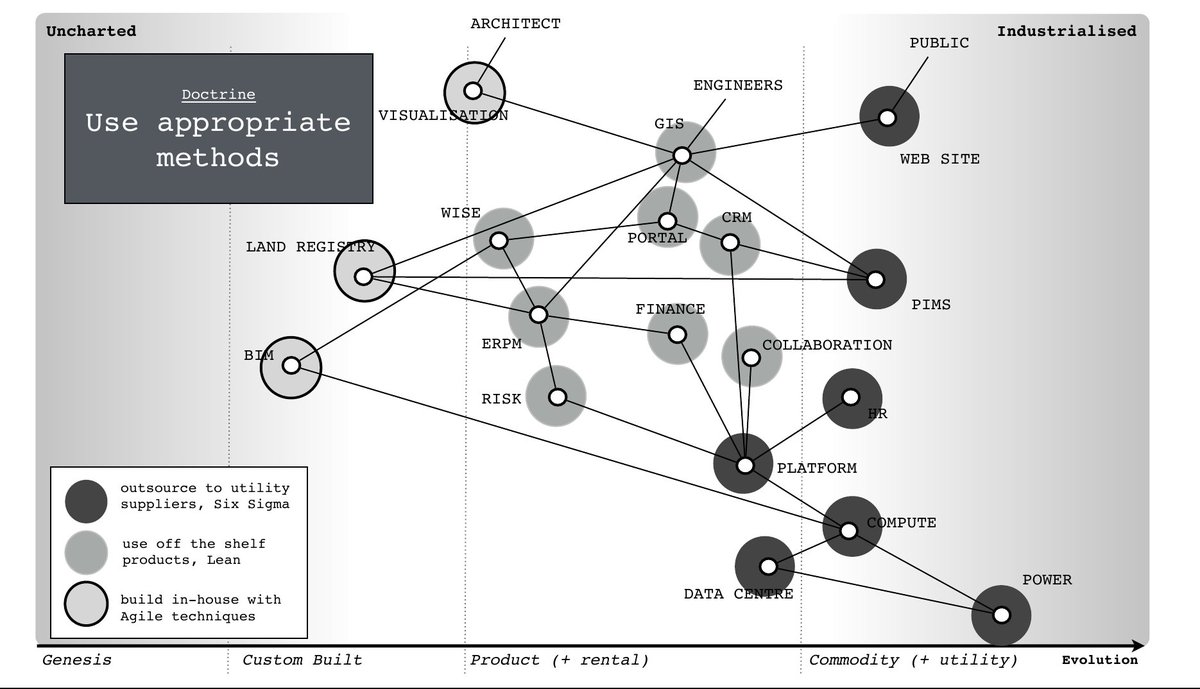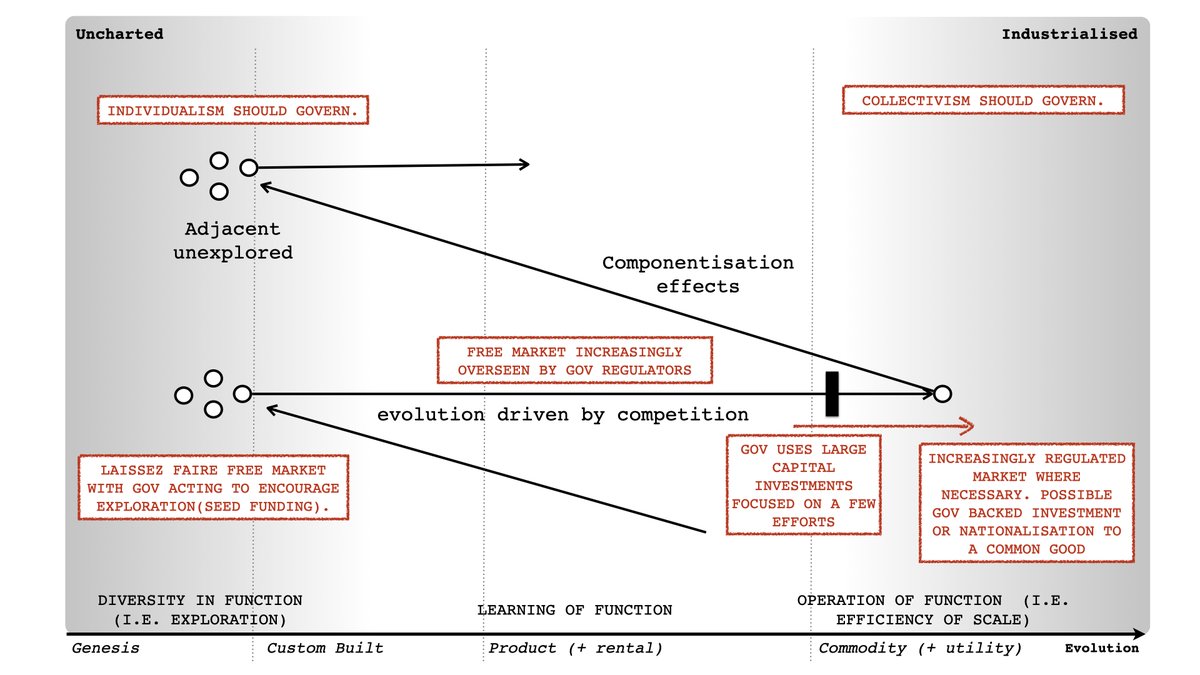X : Can you apply pace layers to maps?
Me : You can but what is where evolves. However, same rules apply to things, practices, data, knowledge and ethical values. All are forms of evolving capital. In the mapping world, we refer to this with pioneers, settlers and town planners.
Me : You can but what is where evolves. However, same rules apply to things, practices, data, knowledge and ethical values. All are forms of evolving capital. In the mapping world, we refer to this with pioneers, settlers and town planners.
X : What's the robot for?
Me : Image from an older presentation slide, don't worry it has no relevance.
X : Is this linked to diffusion?
Me : Not simply. Evolution of a single component can consist of many hundreds of diffusion curves i.e. a virus diffuses but it also evolves.
Me : Image from an older presentation slide, don't worry it has no relevance.
X : Is this linked to diffusion?
Me : Not simply. Evolution of a single component can consist of many hundreds of diffusion curves i.e. a virus diffuses but it also evolves.
X : Why have you got DevOps in legacy? We haven't even started yet.
Me : That's not my problem. I would take a look at serverless.
X : DevOps is serverless.
Me : Some of the practices maybe co-opted (see ITIL vs DevOps) but the new faction will decide what it is or isn't.
Me : That's not my problem. I would take a look at serverless.
X : DevOps is serverless.
Me : Some of the practices maybe co-opted (see ITIL vs DevOps) but the new faction will decide what it is or isn't.
X : I also disagree with your methods graphic.
Me : Do you mean this? As applied to the following map?
X : Yes. Lean is suitable for innovation.
Me : Ah, that depends upon what you mean by innovation. If you mean Genesis then lightweight XP has it beat.
Me : Do you mean this? As applied to the following map?
X : Yes. Lean is suitable for innovation.
Me : Ah, that depends upon what you mean by innovation. If you mean Genesis then lightweight XP has it beat.
X : I disagree.
Me : Well, I've had 15 years of people telling me that Agile works everywhere or Lean works everywhere or Six Sigma works everywhere and why all the competing methods don't. I have no interest in the conversation. Use appropriate methods based upon context.
Me : Well, I've had 15 years of people telling me that Agile works everywhere or Lean works everywhere or Six Sigma works everywhere and why all the competing methods don't. I have no interest in the conversation. Use appropriate methods based upon context.
X : "what you mean by innovation"??
Me :
Genesis of a new act == Innovation
Every custom built == Innovation
Feature differentiation in a product == Innovation
Shift from product to utility model == Innovation
... which "innovation" do you mean? They are not the same.
Me :
Genesis of a new act == Innovation
Every custom built == Innovation
Feature differentiation in a product == Innovation
Shift from product to utility model == Innovation
... which "innovation" do you mean? They are not the same.
So, sure you can say "Lean is great for innovation" in the same way someone can say "Agile is great for innovation" ... they're both true, just we're not talking about the same "innovation". It's one word with many meanings.
X : "Should be?"
Me : Well, people keep trying to make the magic one size fits all i.e. SAFe.
X : Does that work?
Me : Opposing beliefs in one method with no understanding of context? No.
Me : Well, people keep trying to make the magic one size fits all i.e. SAFe.
X : Does that work?
Me : Opposing beliefs in one method with no understanding of context? No.
... it's why we will need Agile 2.0
X : What's in Agile 2.0?
Me : It should be identical to XP but without the add-on baggage to make it work everywhere.
X : You mean XP?
Me : Yes. Lightweight XP is the new Agile.
X : But that was old Agile.
Me : Minus 20 years of consultants.
X : What's in Agile 2.0?
Me : It should be identical to XP but without the add-on baggage to make it work everywhere.
X : You mean XP?
Me : Yes. Lightweight XP is the new Agile.
X : But that was old Agile.
Me : Minus 20 years of consultants.
X : But McKinsey ...
Me : Hang on.
X : What are you doing?
Me : Making bread.
X : What? We were having a conversation.
Me : No we weren't. Well, not one that I'm interested in. Bread is so much more exciting.
Me : Hang on.
X : What are you doing?
Me : Making bread.
X : What? We were having a conversation.
Me : No we weren't. Well, not one that I'm interested in. Bread is so much more exciting.
X : When is that map using multiple methods from?
Me : This one?
X : Yes
Me : 2012 / 13? You'd have to ask @GoAgileGov
X : You've been using multiple methods since 2012?
Me : Oh, no. I've been using multiple methods since 2005/06.
Me : This one?
X : Yes
Me : 2012 / 13? You'd have to ask @GoAgileGov
X : You've been using multiple methods since 2012?
Me : Oh, no. I've been using multiple methods since 2005/06.
X : Have you spoken on this before?
Me : Endless times. I've even written papers on this (Butler Group Review etc) circa 2007/08? Lots in the open source world.
X : Why haven't I seen this?
Me : Things take time to spread. We obviously walk in different circles.
X : HBR?
Me : LOL
Me : Endless times. I've even written papers on this (Butler Group Review etc) circa 2007/08? Lots in the open source world.
X : Why haven't I seen this?
Me : Things take time to spread. We obviously walk in different circles.
X : HBR?
Me : LOL

 Read on Twitter
Read on Twitter